Explore Takamatsu - Japan Travel, Asia
Takamatsu, located in Kagawa Prefecture on Shikoku Island, Japan, is a vibrant city brimming with cultural heritage, natural beauty, and delightful cuisine. As the capital of Kagawa Prefecture, Takamatsu offers a unique blend of history, tradition, and modern attractions. The city is not just a gateway to exploring Shikoku, but a destination rich in experiences that will captivate every visitor traveling to Takamatsu.
Embark on a journey beyond the ordinary—discover our premium Japan tours here for a truly unique travel experience.
Population: Approximately 414,000 in 2022.
Economy: The biggest city on Shikoku, Takamatsu is home to a high concentration of branch offices for national corporations such as Shikoku Railway Company and Tadano Limited-the largest Japan-based manufacturer of cranes and aerial work platforms.
Landmarks: Famous for the Takamatsu Castle, Ritsurin Garden, and Yashima Temple.
Japan
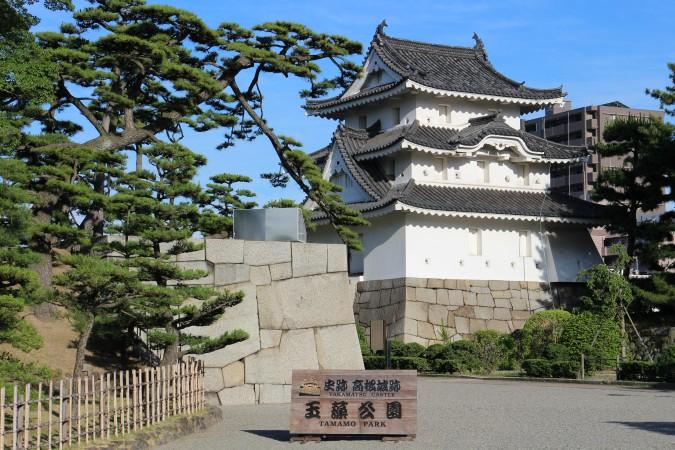
Overview of Takamatsu
History & Cultural Influence
Takamatsu is rich in culture and history. Once a prominent feudal castle town, it played a significant role during Japan's Edo period. The city's historical narrative is prominently featured in landmarks such as Takamatsu Castle, a stunning example of Japanese fortification architecture dating back to the early 17th century. The city is also renowned for its classical gardens, particularly Ritsurin Garden, which is considered one of Japan's most beautiful landscaped gardens. Established in the early 17th century, Ritsurin Garden epitomizes the elegance of Japanese zen garden design with its meticulously maintained landscapes, picturesque ponds, and historic teahouses.
Interaction with The Locals
Takamatsu, the capital of Kagawa Prefecture on Shikoku Island, has a population of approximately 414,000 residents. The city's citizens are known for their warmth and hospitality, contributing to Takamatsu's reputation as a friendly and welcoming place. The local community embraces a blend of traditional Japanese values and modern influences, reflecting the city's rich cultural heritage and progressive development.
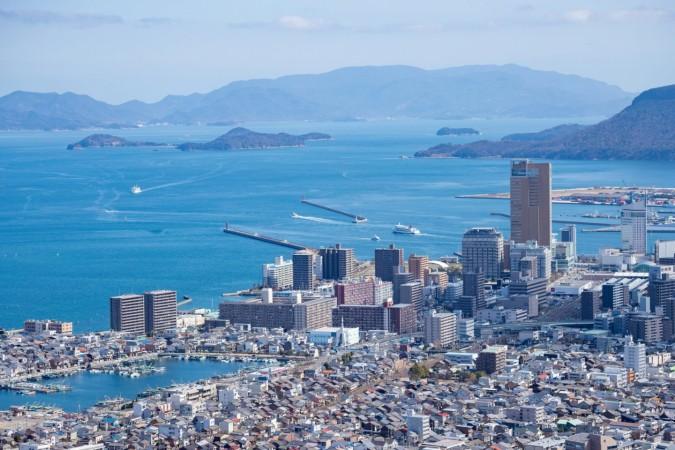
Seto Sea, Takamatsu-Shi - © Japan Tourism
Top Attractions in Takamatsu
Takamatsu is a treasure trove of attractions that cater to a wide range of interests. These must-visit sites in Takamatsu provide a comprehensive view of Takamatsu’s diverse offerings, from its rich historical legacy to its vibrant cultural and natural landscapes.
- Ritsurin Garden: This renowned Japanese landscape garden is a must-see for anyone visiting Takamatsu. It features beautifully landscaped grounds with serene ponds, traditional teahouses, and seasonal flora. The garden’s meticulously maintained paths and historical charm make it a tranquil escape.
- Takamatsu Castle: Explore the remnants of this historic castle, including its impressive stone walls and the surrounding moat. The castle grounds offer stunning views of the city and the Seto Inland Sea. Originally built in the early 17th century, the castle is a symbol of Takamatsu’s feudal past.
- Yashima Temple: Located on Yashima Mountain, this historic temple provides not only spiritual significance but also panoramic views of the city and surrounding area. The temple is known for its historical importance and serene atmosphere.
- Shikoku Mura: This open-air museum showcases traditional rural architecture from Shikoku Island. Visitors can explore relocated and restored buildings, including farmhouses, shrines, and workshops, offering a glimpse into the island’s past.
- Tamamo Park: Situated in the grounds of Takamatsu Castle, this park offers beautiful walking paths, seasonal flowers, and a peaceful environment. It’s a popular spot for relaxation and enjoying the outdoors.
- Gokuraku-ji Temple: Known for its beautiful garden and historical significance, Gokuraku-ji Temple is another notable site in Takamatsu. It’s a place of tranquility and reflection, with stunning seasonal displays.
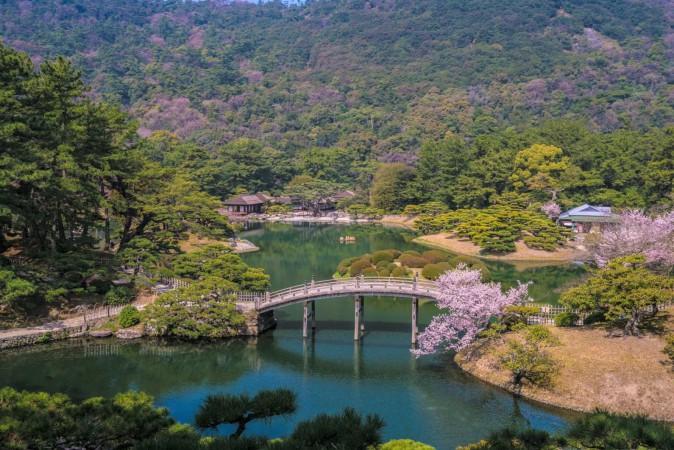
Ritsurin Garden - © Kagawa Tourism
Must-Try Dishes in Takamatsu
Takamatsu’s culinary tradition is a highlight of any visit. These dishes highlight the rich flavors and diverse culinary traditions of Takamatsu. Each bite offers a taste of the city’s culture and heritage, making your culinary journey through Takamatsu a memorable experience.
- Sanuki Udon: This thick, chewy noodle dish is a local favorite. Sanuki Udon is well-known for its rich flavor and filling texture. It is served in a savory broth with a variety of toppings, including tempura, green onions, and raw egg. It is a mainstay of the cuisine of Takamatsu.
- Kibi Dango: These millet dumplings are a traditional Japanese sweet that originated in Kagawa Prefecture. They are chewy, slightly sweet, and often enjoyed with a cup of tea.
- Wagashi: Japanese confections such as Yokan (sweet jelly made from red bean paste) and Daifuku (mochi rice cakes filled with sweet bean paste) are popular local treats. The subtle flavor of Japanese culinary skill is present in these treats.
- Takamatsu Curry: A unique variation of Japanese curry, Takamatsu curry features a rich, savory sauce with a variety of ingredients including meat and vegetables. It's often served over rice and sometimes topped with a fried cutlet.
- Miso Katsu: A local take on the popular Japanese dish, Miso Katsu features breaded and fried pork cutlets smothered in a tangy miso-based sauce. This dish combines the crispy texture of katsu with the deep flavors of miso.
- Yashima Yakisoba: Stir-fried noodles with vegetables and meat, Yashima Yakisoba is a beloved street food in Takamatsu. It’s savory and satisfying, making it a great option for a casual meal.
Are you interested in Nara? Discover more about this unique destination with our article here.
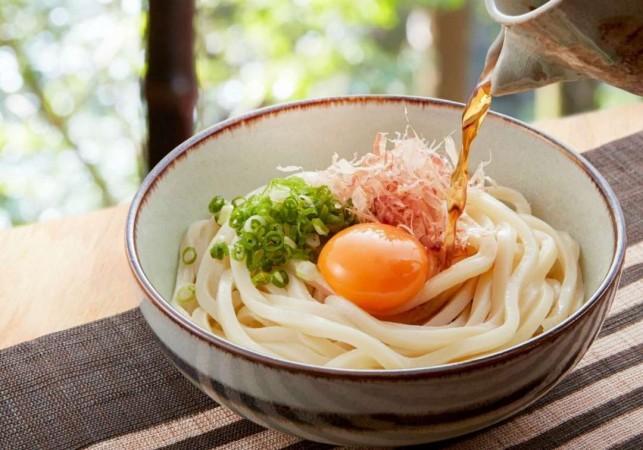
Sanuki Udon - © Japan Tourism
Festivals & Local Celebrations
Takamatsu's vibrant festivals and local celebrations not only provide entertainment but also offer a deep dive into the local culture, traditions, and community life of the people. These events offer visitors a chance to experience traditional Japanese festivities and local customs firsthand.
- Takamatsu Matsuri: Held annually in the summer, Takamatsu Matsuri is one of the city's most celebrated festivals. It features lively parades, traditional dances, and fireworks displays. The festival creates a festive atmosphere, showcasing local performers and artists, and inviting visitors to join in the celebrations.
- Sanuki Festival: Celebrated in late April, the Sanuki Festival is known for its traditional street performances and cultural displays. The event includes lively drum and dance performances, processions of decorated floats, and various stalls offering local food and crafts.
- Yashima Daisen Festival: This autumn festival takes place at Yashima Temple and includes traditional rituals, music performances, and processions. It’s a time for locals to celebrate and honor their heritage, and visitors are welcome to witness the ceremonies and enjoy the festive atmosphere.
- Takamatsu City Flower Festival: Held in spring, this festival celebrates the blooming of flowers throughout the city. With flower displays, garden tours, and floral-themed activities, it’s a visual feast for nature lovers and a great way to experience Takamatsu’s natural beauty.
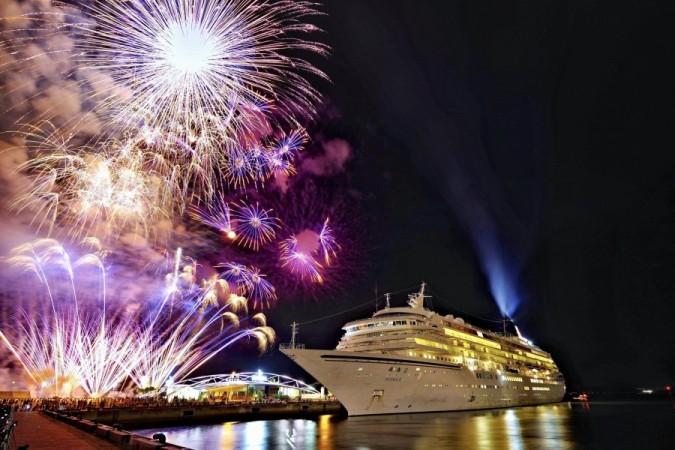
Fireworks during Sanuki Festival - © Shikoku Tourism
What to Do in Takamatsu
Takamatsu, a gem on Shikoku Island, offers a diverse range of activities that cater to various interests. Whether you’re an outdoor enthusiast, a culture explorer, or someone who enjoys leisurely strolls, Takamatsu has something for you.
- Explore Natural Beauty: Take advantage of Takamatsu’s stunning natural landscapes. Explore Yashima Mountain's picturesque pathways to get sweeping views of the city and the Seto Inland Sea. For a more leisurely outdoor experience, stroll through the beautifully landscaped Ritsurin Garden, where serene ponds and seasonal flora provide a perfect backdrop for a wellness retreat.
- Immerse in Local Culture: Take part in a tea ceremony to learn about the creation of matcha and to taste traditional Japanese treats, and immerse yourself in Japanese culture. Visit local craft workshops to see artisans at work and learn about traditional Japanese crafts like pottery and weaving.
- Experience Traditional Performing Arts: Attend a Kabuki performance or other traditional Japanese theater to witness the elaborate costumes and dramatic storytelling that characterize these art forms. Takamatsu offers opportunities to engage with these cultural experiences in intimate settings.
- Take a Scenic Cruise: Discover the beauty of the Seto Inland Sea on a relaxing boat cruise. The journey offers breathtaking views of the sea, neighboring islands, and coastal landscapes, providing a unique perspective on the region’s natural beauty.
- Visit Local Markets: Experience the bustling atmosphere of Takamatsu’s local markets, such as the Marugame Genichiro-Inokuma Museum of Contemporary Art Market. Browse through stalls offering fresh produce, local crafts, and unique souvenirs. These markets provide a taste of daily life and local commerce.
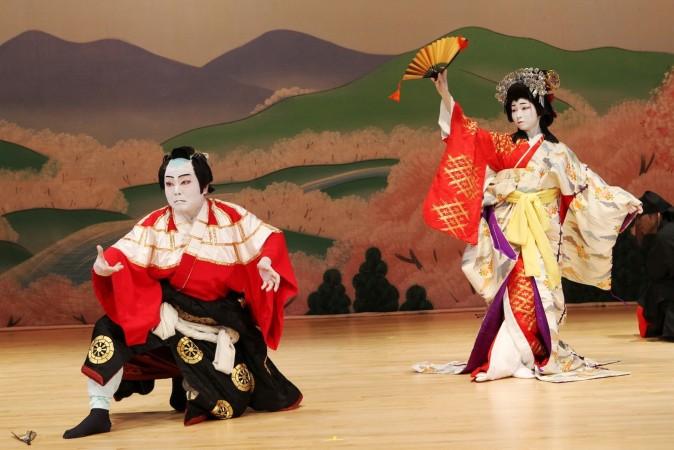
Experience Kabuki performance - © Medium
Shopping in Takamatsu
- Local Markets: For a taste of local flavor and culture, visit Takamatsu’s Sanuki Fair. This lively market features a variety of stalls selling fresh produce, handmade crafts, and traditional goods. It’s a great spot to pick up unique souvenirs and experience the vibrant local shopping atmosphere.
- Shopping Districts: The Marugame Shopping Street and Takamatsu Station Area are two of the city’s premier shopping districts. Here, you’ll find a mix of boutiques, department stores, and specialty shops. These areas are perfect for finding fashion items, electronics, and various other goods, all within a bustling urban environment.
- Department Stores: For a more contemporary shopping experience, head to LUMINE Takamatsu and Marugame Town. These modern shopping centers offer a wide selection of international and Japanese brands, from clothing and accessories to home goods and gourmet food.
- Specialty Shops: Explore specialty stores throughout the city that offer unique items such as local sweets, traditional Japanese teas, and handmade jewelry. These shops provide a curated selection of goods that highlight Takamatsu’s distinctive character and craftsmanship.

Takamatsu Station - © Wikimedia
Weather in Takamatsu: Best Time to Visit
Spring in Takamatsu
- Weather: Spring in Takamatsu is characterized by mild temperatures and blooming flora. Temperatures during the day range from 10°C to 20°C (50°F to 68°F), and the weather is generally pleasant with low humidity.
- Tourism Trend: This is one of the most popular times to visit due to the stunning cherry blossoms and vibrant flower festivals. The Takamatsu City Flower Festival showcases the city’s floral beauty, making it a perfect time for outdoor activities and garden visits.
Summer in Takamatsu
- Weather: Summers are hot and humid, with temperatures often reaching 25°C to 35°C (77°F to 95°F). Expect high humidity and occasional rain showers, especially during the monsoon season in June.
- Tourism Trend: Despite the heat, summer is a lively time in Takamatsu with various festivals, including the Takamatsu Matsuri. The city's vibrant street performances and fireworks make it an exciting period for experiencing local culture. It’s also a great time for aquatic activities.
Autumn in Takamatsu
- Weather: Autumn brings cooler temperatures and less humidity, with daytime highs ranging from 15°C to 25°C (59°F to 77°F). Majority of the time, the weather is cool and pleasant, which is perfect for outdoor exploration.
- Tourism Trend: This season is favored for its beautiful autumn foliage and cultural events. The Yashima Daisen Festival and various local celebrations offer a glimpse into traditional Japanese culture. Autumn is also perfect for hiking and sightseeing.
Winter in Takamatsu
- Weather: Winters are relatively mild in Takamatsu, with temperatures ranging from 5°C to 15°C (41°F to 59°F). While it’s cooler compared to other seasons, snow is rare, and the weather is generally dry.
- Tourism Trend: Winter is less crowded, offering a more peaceful experience for exploring Takamatsu’s historical sites and gardens. It’s a good time to visit Takamatsu Castle and enjoy the quieter atmosphere.
Explore the unique charm of Kyoto, another must-visit place in Japan, in our article here.
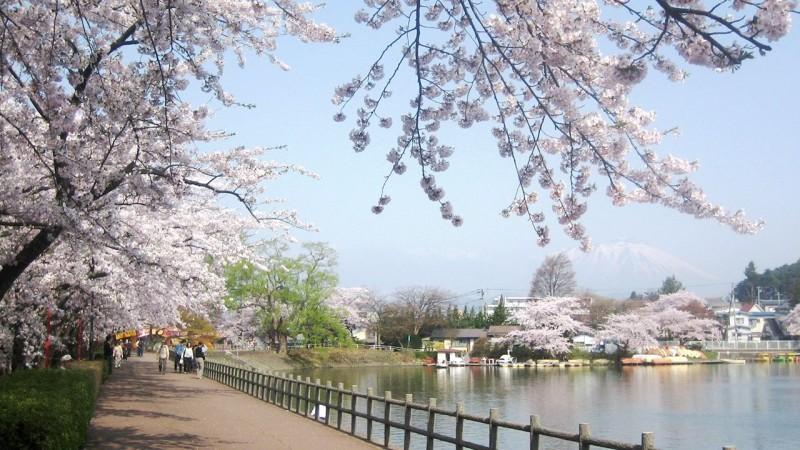
Cherry Blossoms season in Takamatsu - © Nippon
Culture Etiquette in Takamatsu
Takamatsu, known for its rich cultural heritage and traditional charm, has its own set of local customs that visitors should be aware of. Embracing these unique practices will help you connect more deeply with the local culture and show respect for the traditions of this beautiful city:
- Respect for Nature: Takamatsu’s residents have a deep appreciation for nature, reflected in their care for public spaces and gardens. When visiting places like Ritsurin Garden, follow the designated paths and avoid touching or picking plants.
- Onsen Customs: If you visit an onsen (hot spring bath) in or around Takamatsu, familiarize yourself with proper bathing etiquette. Thoroughly wash and rinse your body before entering the communal baths.
- Traditional Japanese Tea Ceremony: During the ceremony, follow the host’s lead on how to handle the tea bowl and express your appreciation by taking a moment to savor the tea before drinking. Avoid speaking loudly and focus on the serene atmosphere of the event.
- Shoes in Traditional Homes: When visiting traditional Japanese homes or ryokan (inns), be prepared to remove your shoes before entering. There are usually designated areas for shoes near the entrance. Be mindful of this practice in homes and some restaurants, and use provided indoor slippers if available.
- Politeness in Public Spaces: In Takamatsu, maintaining a polite demeanor is highly valued. Keep conversations at a moderate volume, especially in places like temples, shrines, and public transport. It’s also customary to avoid public displays of affection.
- Dining Practices: When enjoying local cuisine, such as Takamatsu’s famous Sanuki udon, it’s customary to slurp your noodles. This practice is not only a sign of enjoyment but also helps to cool the noodles and enhance the flavors. However, avoid making noise when eating other types of food.
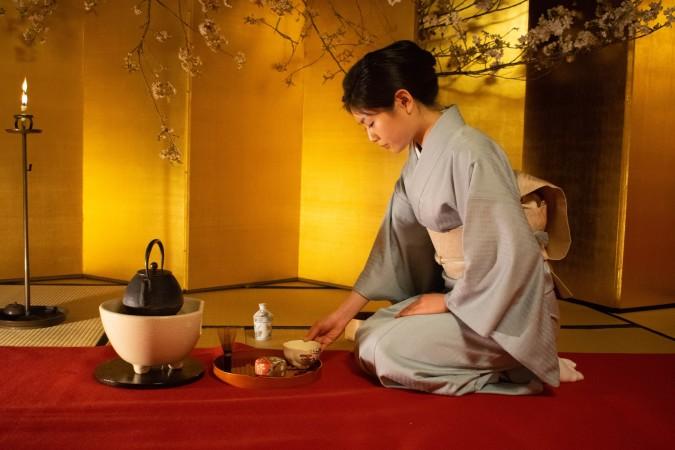
Japanese Tea Ceremony - © Different Level
Essential Travel Information
Getting Around Takamatsu
Takamatsu offers a variety of transportation options to explore the city and its surroundings:
- Takamatsu City Tram: The Takamatsu City Tram (Kotoden) is a convenient way to get around central Takamatsu. It provides access to key destinations like Takamatsu Castle and Ritsurin Garden.
- Bicycles: Takamatsu is a bike-friendly city with several rental services available. Cycling is a pleasant way to explore the city’s parks and waterfront areas.
- Taxis: Taxis are readily available and can be a convenient option for reaching specific destinations or when traveling with heavy luggage. Look for taxis at designated stands or use a taxi-hailing app.
- Car Rentals: Renting a car is a good option if you plan to explore the surrounding areas or take day trips to nearby islands like Naoshima. Several rental agencies operate in Takamatsu, and driving provides flexibility for your journey.
ATM & Banking Services
Handling financial transactions in Takamatsu is quite convenient, with ATMs readily available throughout the city, including at convenience stores and post offices. Most international credit and debit cards are accepted when you travel to Takamatsu. Currency exchange services can be found at various locations, including major banks, hotels, and international airports, with additional exchange counters located at the train station.
Where to Stay in Takamatsu
Takamatsu offers a variety of accommodation options to cater to different preferences and budgets. For a luxurious experience, high-end hotels provide top-notch amenities and excellent service in central locations. Those seeking comfort at a moderate price will find numerous mid-range hotels offering a good balance of quality and affordability. For an authentic Japanese experience, traditional ryokan inns feature tatami mats, futon bedding, and soothing onsen (hot spring baths).
Articles for you

Explore Yala National Park - Sri Lanka Travel, Asia
Tucked away in Sri Lanka’s southeastern corner, Yala National Park is where wild nature meets deep tradition. Known worldwide for its leopard population, the park is also home to elephants, sloth bears, crocodiles, and hundreds of bird species. Beyond wildlife, Yala opens doors to a cultural landscape dotted with ancient temples, Buddhist ruins, and coastal villages. For travelers seeking more than just a safari, Yala offers a chance to explore eco-tourism, local communities, and sacred heritage sites.
Population: The Yala National Park area doesn’t have a human population.
Economy: The economy around Yala National Park thrives on a blend of eco-tourism, agriculture, and local services. Safari tours, eco-lodges, and cultural experiences drive steady income for nearby towns like Tissamaharama and Kataragama, supporting thousands of families.
Landmarks: Famous for Block I of Yala and wildlife encounters, including elephants, sloth bears, crocodiles, and exotic bird species.

Explore Galle - Sri Lanka Travel, Asia
Nestled on Sri Lanka’s southern coastline, Galle is a vibrant city where history meets the sea. Its cobbled streets, colonial architecture, and serene beaches make it a must-visit destination for travelers seeking a blend of culture, adventure, and relaxation. A UNESCO World Heritage site, Galle captivates visitors with its Dutch Fort, bustling markets, and friendly locals. Whether you’re exploring the ramparts at sunset or savoring fresh seafood by the shore, Galle promises an unforgettable journey into Sri Lanka’s heritage.
Population: Approximately 113,000 in 2023.
Economy: Galle’s economy thrives on tourism, trade, and fisheries. The city’s historic fort, colonial architecture, and coastal charm draw thousands of international visitors each year, making tourism its main economic driver. Fishing remains vital for local livelihoods, supplying fresh seafood across the region.
Landmarks: Famous for the Galle Fort, Dutch Reformed Church & Maritime Museum, and Unawatuna Beach.

Explore Bentota - Sri Lanka Travel, Asia
Nestled along Sri Lanka’s southwestern coast, Bentota is a tropical paradise that blends golden beaches, vibrant culture, and thrilling adventures. Famous for its calm waters, luxury resorts, and scenic river estuary, Bentota has become a top destination for travelers seeking both relaxation and authentic experiences. From serene beach walks at sunrise to adrenaline-pumping water sports, this coastal town offers a perfect balance of leisure and exploration. With its proximity to Colombo and Galle, Bentota is easy to reach, making it an ideal stop for both short escapes and extended holidays.
Population: Approximately 37,000 in 2023.
Economy: Bentota’s economy thrives mainly on tourism, which drives local businesses such as hotels, restaurants, and wellness retreats. The town also benefits from fishing, coconut cultivation, and handicrafts like wood carving and batik textiles. Many residents rely on the growing demand for water sports and Ayurvedic treatments, making tourism the backbone of both income and employment in the area.
Landmarks: Famous for Bentota Beach, Bentota River Safari, and Kande Vihara Temple.

Explore Mirissa - Sri Lanka Travel, Asia
Mirissa is a charming coastal town on Sri Lanka’s southern shoreline. Known for its golden beaches, turquoise waters, and vibrant marine life, it has become a must-visit stop for travelers exploring the island. Many come for whale watching, surfing, and sunset views at Coconut Tree Hill, but Mirissa offers much more than postcard beauty. The fishing boats you see anchored by the bay carry generations of stories. Local traditions, delicious cuisine, and a laid-back rhythm of life shape every visitor’s experience.
Population: Approximately 4,700 in 2023.
Economy: Mirissa’s economy is largely shaped by its coastal location. Fishing has long been the backbone of local livelihoods, with generations relying on the Indian Ocean for income. In recent decades, tourism has become the main driver of growth, thanks to whale watching, surfing, and beachside hospitality.
Landmarks: Famous for Mirissa Beach, Coconut Tree Hill, and Parrot Rock Bridge.

Explore Nuwara Eliya - Sri Lanka Travel, Asia
Tucked away in the Central Highlands of Sri Lanka, Nuwara Eliya is often called “Little England”. With its rolling tea plantations, cool misty mornings, and colonial charm, this mountain town feels like a step into another world. Travelers come here to breathe fresh air, walk through flower gardens, sip the finest Ceylon Tea, and enjoy a pace of life far from the island’s busy cities. Whether you’re drawn by scenic landscapes, heritage architecture, or the warmth of its people, Nuwara Eliya is a destination that blends nature, culture, and history in perfect harmony.
Population: Approximately 781,000 in 2023.
Economy: Nuwara Eliya’s economy thrives mainly on tea production, as it sits in the heart of Sri Lanka’s central highlands, famous worldwide for Ceylon Tea. The city also benefits from a growing tourism industry, attracting visitors with its colonial charm, cool climate, and scenic landscapes.
Landmarks: Famous for Gregory Lake, Hakgala Botanical Garden, and Victoria Park.

Explore Sukau - Malaysia Travel, Asia
Nestled on the banks of the Kinabatangan River in Sabah, Malaysian Borneo, Sukau is a destination where wildlife, culture, and conservation come together. Known as one of Asia’s top spots for river safaris and eco-tourism, this quiet village offers a front-row seat to encounters with Bornean orangutans, pygmy elephants, proboscis monkeys, and exotic birdlife.
Population: Approximately 1,400 in 2019.
Economy: Sukau’s economy is shaped by its riverine location and natural resources. Traditionally, the Orang Sungai community relied on fishing, small-scale farming, and forest gathering for their livelihood. Today, the village has shifted toward eco-tourism, with river cruises, jungle trekking, and homestays providing income.
Landmarks: Famous for the Kinabatangan River cruises, Gomantong Caves, and Ox-bow lakes and wetlands.
